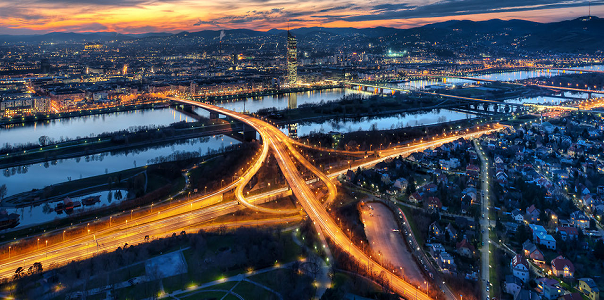Smart City technology is an attractive prospect to councils and utilities for reducing waste and improving profits. The global smart city market is projected to be worth $400 billion per annum by 2020 but what exactly makes up a smart city.
Smart Cities and Digital Transformation
In less than five decades, the number of cities (1) around the world has more than tripled from 548 back in 1970 to 1,692 in 2014. Today, more than 54% of the world’s population live in cities; a percentage projected to grow to 66% by 2050 (UNDESA, 2015).
With close to four billion people living in cities today, a global wave of digital-era urbanization is taking place. An increasing number of urban agglomerates, ranging from small to mega cities, are expediting their “smart city” development efforts. This global movement is driving policy innovations and aggressive global investments in new technological implementations and data utilization approaches, with the objective of solving chronic urban growth and social problems. The concept of a “smart city” is still evolving and what defines it is not a matter of agreement.
Given these commonly used concepts, a universal definition of the smart city adopted by the Unite Nations is that it is “an innovative city that uses information and communication technologies and other means to improve quality of life, efficiency of urban operation and services, and competitiveness, while ensuring that it meets the needs of present and future generations with respect to economic, social and environmental aspects” (ITU, 2014b).
The underlying areas of development for a smart and sustainable city
1) Quality of life and lifestyle
2) Infrastructure and services
3) ICT, communications, intelligence and information
4) People and society
5) Environment and sustainability
6) Governance and administration
7) Economy and finance
8) Mobility and transportation
The smart city project is a major socio-technical urban transformation that promises to revolutionize the ways hundreds of thousands of people live in and interact with the city, with digital technology and data as core enablers.
Dubai the trendsetter in terms of embracing digital technology
When it comes to large-scale digital transformations, Dubai has been the regional risk-taker. For almost two decades, the city proved to be a trendsetter in terms of embracing digital technology. This included adopting cutting-edge digital governance approaches, utilizing information and communication technologies for development, adjusting policies and regulations to adapt to rapid societal changes and technological advancements, providing enabling infrastructures for internet businesses, and creating a hub for a knowledge economy that extends to the wider region. This time around, Dubai’s new ambitious endeavor is to create the “smartest” city and one of the “happiest” cities in the world by 2017.
What can the future smart city offer Mauritius.
Smart Traffic: Connected car sensors collect valuable real time data about traffic density and report it the control center, allowing to adjust traffic light sequences intelligently, as well as apply manual corrections whenever necessary.
Smart Parking: Integrated with municipal Buses and private car owners, to build a highly efficient parking system.
Smart Energy: Automatic lighting control, may vary from obvious night-time auto activation to dimming based on crowd density and weather conditions.
Smart Buildings: Facilities including power management, lighting, physical security, fire safety and IT infrastructure.
Smart Safety: Firefighters wearing sensors that let them know if the CO2 in a building has reached lethal levels. Grid of connected CCTV cameras to ensure public safety. Air quality sensors detect pollution peak and warns people who are subject to allergies through their smartphones.
Smart Charging: There are charging stations by the side of each road for electric vehicles, drivers can pay by flashing their wallet or even contact less payment.
Smart Advertising: Personalized digital signs for people passing by.
Smart Water System: IoT sensor enabled water systems which measure the flow, pressure, level and chemical content of the water to improve quality and usability
Smart Views: Use of augmented and virtual reality to help people indoor and outdoor navigation.
Smart Access: Users can open car doors or office doors by just touch of finger or even with IoT enabled sensors ensuring doors are opened when users are approaching
New York, London, Paris, Columbus Ohio, Dubai & Barcelona are the examples of smart cities around the world.
Smart Cities bring multiple rewards and digital transformation is ultimately about improving the ecosystem in which residents live and businesses succeed as well as the services and activities that governments, firms and organisations deliver. If you have a keen interest in the future of digital transformation, do contact Naazreen on 2331636 or via e-mail at naazreen.ghoorun@infosystems.mu .

